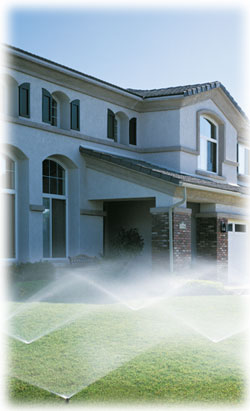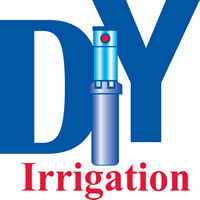|
Troubleshooting Lawn Sprinklers and
Irrigation Systems
Troubleshooting Lawn
Sprinklers and Irrigation Systems is easy if you follow these steps.
Problem
A: All zones will not work electrically, but will work manually.
 |
Step1.
Is rain sensor activated?
 |
Yes-
By-pass sensor or wait until sufficient evaporation time |
 |
No-
Proceed to step #2 |
|
 |
Step
2. Is there 110 VAC to
controller? (keep in mind the battery back-up will power
the display).
 |
No-
Check the C/B or Ground fault outlet associated with that
outlet and reset. |
 |
Yes-
Proceed to step #3 |
|
 |
Step
3. Is there 24VAC at
outlet of transformer?
 |
No-
Replace transformer |
 |
Yes-
Proceed to step#4 |
|
 |
Step
4. Is there 24VAC at
each zone terminal when zone is turned on?
 |
No-
Reset controller, if no help, replace controller. |
 |
Yes
Proceed to step #5 |
|
 |
Step
5. Check for bad connection
or broken wire on the common or ground wire between electronic
controller and valve that was wired first from the controller. |
Problem
B: One zone will not work electrically, all other zones operate normally.
 |
Step 1. Check
for 24VAC at the zone wire terminal with the failure. (While
zone is programmed or is operating is there 24VAC at terminal?)
 |
No- Reset the controller
and check again. Still not operating, faulty
controller. |
 |
Yes- Proceed to step #2 |
|
 |
Step 2. Check
for 24VAC at the zone not operating. Remove wire nuts and check
for 24VAC on wires coming from the controller. Is there 24VAC.
 |
No- Check for broken or damaged
control wire between controller and valve. |
 |
Yes- Replace solenoid on
valve. |
|
Problem C: Two
zones will not work electrically, remaining zones work normally.
 |
Step
1. Refer to Problem B
for diagnostic procedures. Note: If problem zones are the two
furthest zone valves from the controller, the most probable
cause would be a broken ground wire or a bad connection between
the last working zone valve and the first failed valve. (Example:
You ran the ground wire from the controller to zone 2 then to
zone 1, then zone 4, then zone 3, and then zone 5 and 6. Zone
5 and 6 are failed.) Look for the problem connection or broken
ground wire between zone 3 and zone 5.(2-1-4-3 problem 5-6) |
Problem D:
Zone valve will not close, zone continually runs, even when the
controller is unplugged.
 |
Step 1. Remove
solenoid on zone valve and check plunger. Check and see if
plunger is stuck in retracted position. Is the plunger retracted?
 |
Yes- free plunger and clean,
make sure plunger has smooth operation. (Be sure to turn
water off prior to removing solenoid.) |
 |
No- proceed to step #2. |
|
 |
Step 2.
Remove screw or bolts that hold the upper half of valve to the
bottom half. Separate the upper half, ("bonnet"),
from the lower half. ("valve body") Remove rubber
diaphragm and remove any debris from valve body. If you are
unable to visually find any debris turn water back on momentarily
and flush valve. ( during flushing process do not allow debris
to enter back into valve). |
Problem E: Spray
head pops up but does not spray.
 |
Step
1. Unscrew nozzle on
top of turret, remove finger filter and clean filter and nozzle. |
Problem
F: One Gear driven head in a zone does not spray and
will not pop up.
 |
Step 1. Unscrew
head from head body. Inspect and remove any debris from filter.
If filter is not clogged proceed to step two. |
 |
Step 2. Dig
area around head to gain access to barb fitting associated to
failed head that is connected to PVC fitting. Unscrew barb and
clean debris
out of barb fitting.
|
 |



